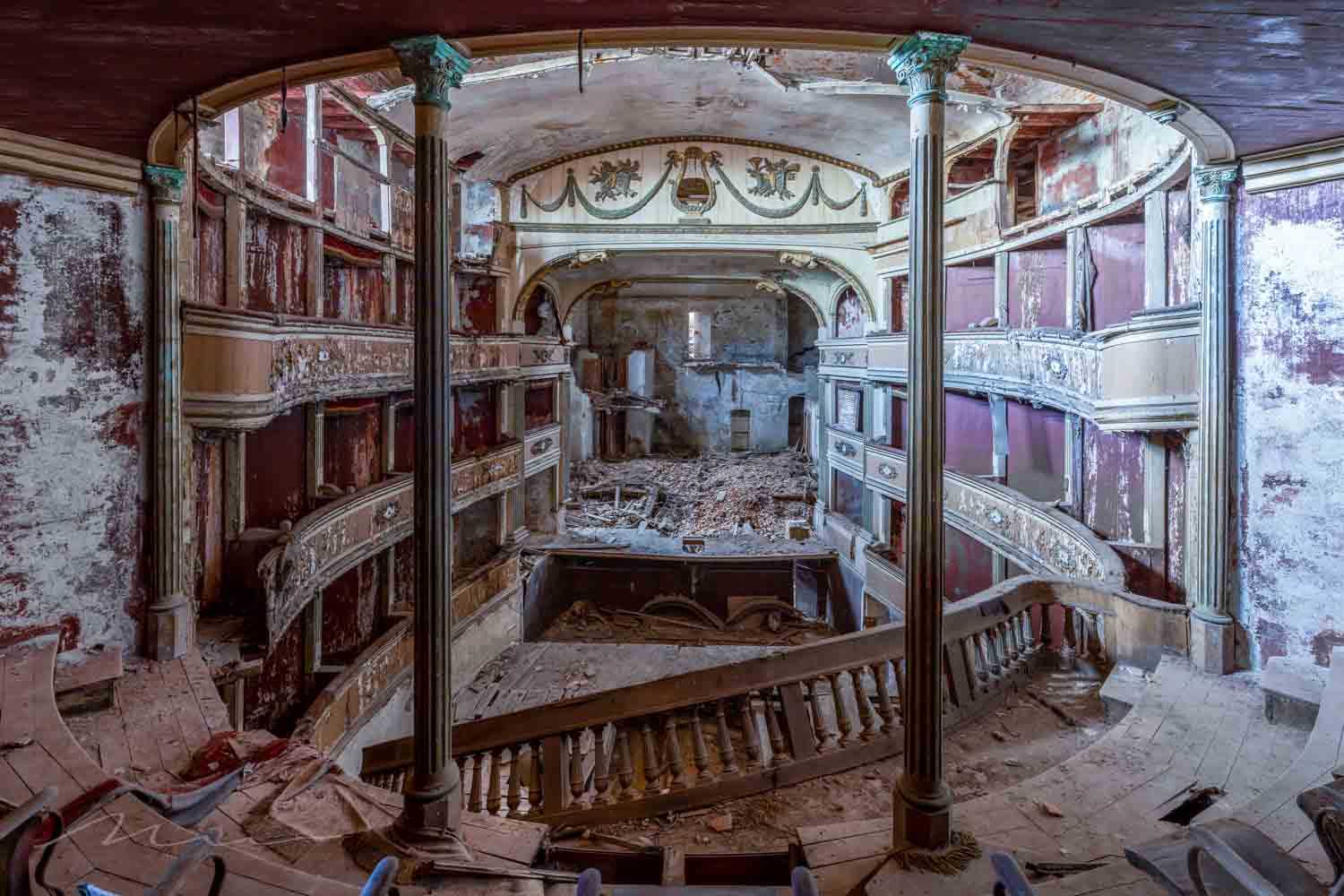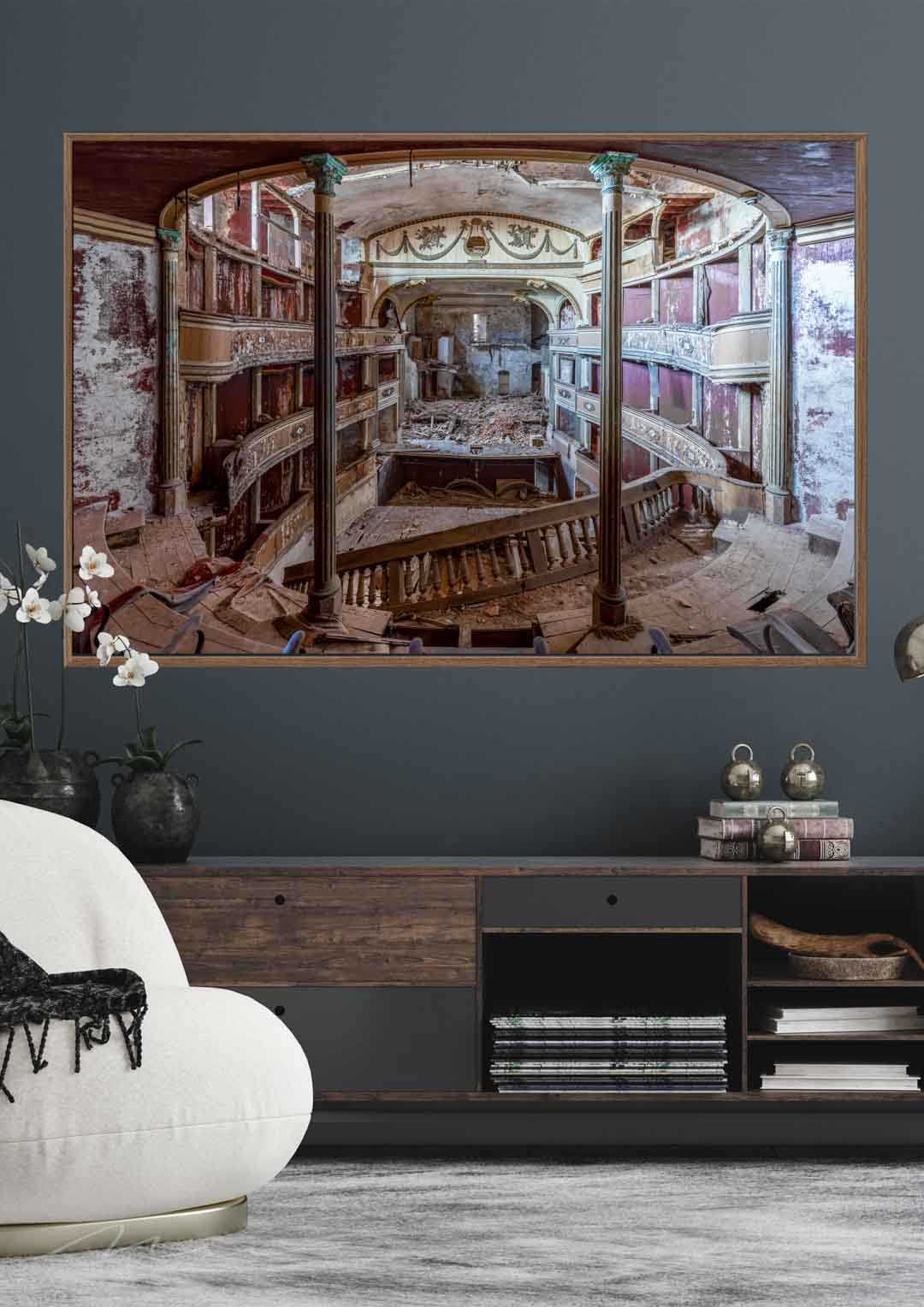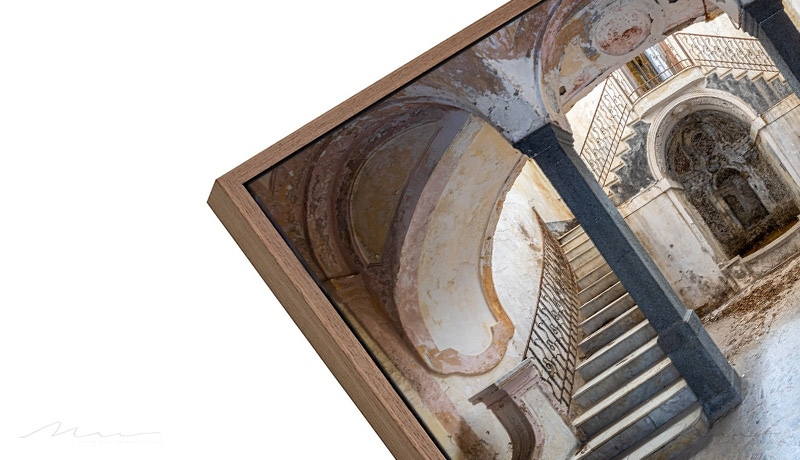The Curtain Has Fallen
fine art with museum glass
Some theaters are abandoned for no reason, others for a logical reason. This theater [built in 1889] was left to the elements of nature, a terrible snowfall caused the roof to collapse. To be subsequently overtaken by time, new techniques, new interests emerged. They had no desire, no time, no energy and no money to renovate this theater. In the end, the curtain fell ….
Embrace the story within your about the purchase.
Backing 4 mm Dibond
Printed on Fine Art cotton/paper
Museum glass
Framework
Prices vary from €2750,- to €4500,-
excl. transport
Make Enquiry
INTERESTED? PLEASE MAKE AN ENQUIRYThis fine piece of art is a Custom made piece. It all starts with the right choice of quality paper combined with the best print work, I’ve chosen for a mix of paper and cotton and the best printshop known in the art world. Why..; only the best fabrication counts for me and my clients. By choosing for a mix of paper and cotton; colors will come to life, feeling and embrasing the story that lies within.
The frame work is carefully chosen, where the artwork (embossed on a 4 mm dibond backing) will “float”.
Fine Art Print vs Standard Print
Fine Art printing is the term often used to refer to professional photographs being printed on very high quality paper. It is the result of the perfect combination of a great soulful paper, the wide colour gamut and archievability qualities of a set of inks and the expertise of a photographer and a printer (can be the same person).
The difference between Fine Art paper and normal photo paper lies in the composition of the paper itself. As a matter of fact, natural fibres (usually cotton or alpha cellulose) must be included within the composition of fine art paper. The paper is not artificially bleached with chlorine, thus ensuring that the photos stand the test of time. A major asset in the sphere of art photography!
Normal photo paper meet the needs of some users when it comes to printing photos to be viewed on an occasional basis, whereas Fine Art paper will ensure that images are shown off in their best light and provides good performance when exhibiting prints.
Because Fine Art paper is intended for the printing of high-quality photographs, its quality must be ideally suited to receiving inks and pigments. The composition of the surface layer must allow the ink to adhere well over time, while offering a neutral pH to ensure that the paper also stands the test of time.
Last but no least, this Fine Art paper will allow you to emphasise the composition of my image, while providing the ideal support for intense colours and marked contrasts, while also enabling a wide range of grey tones. Embrace the story your about the purchase.


